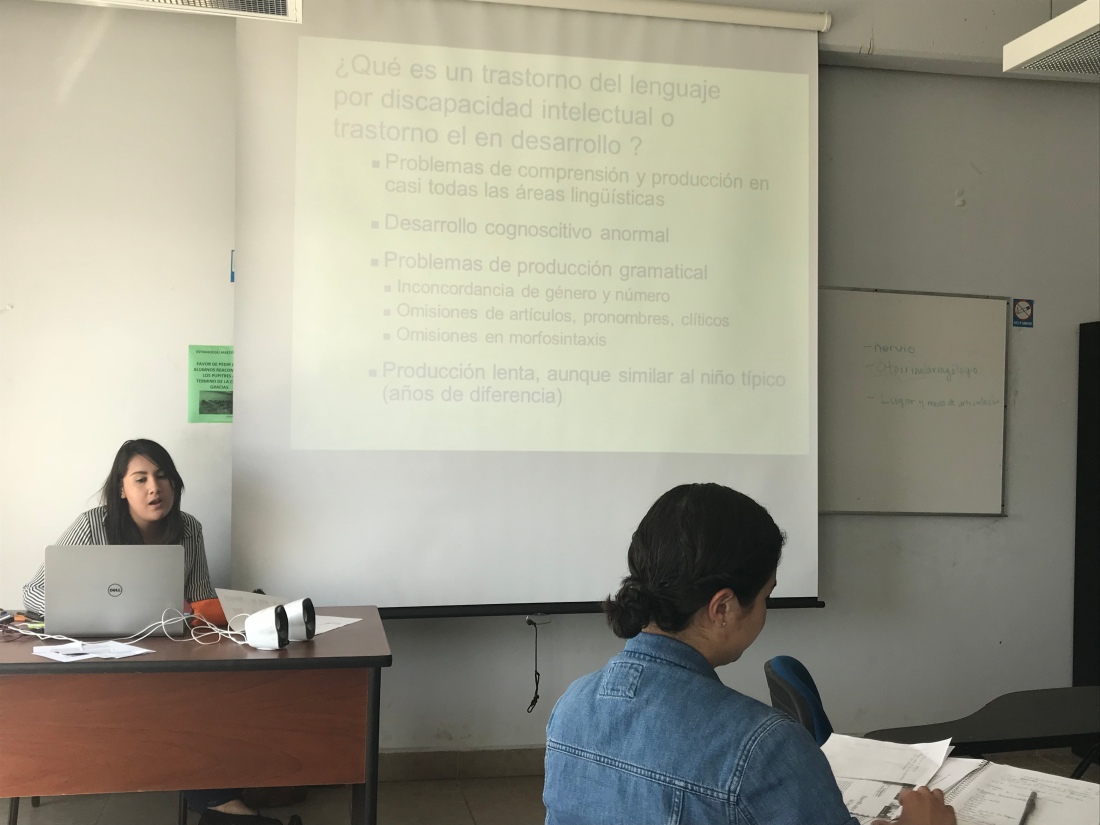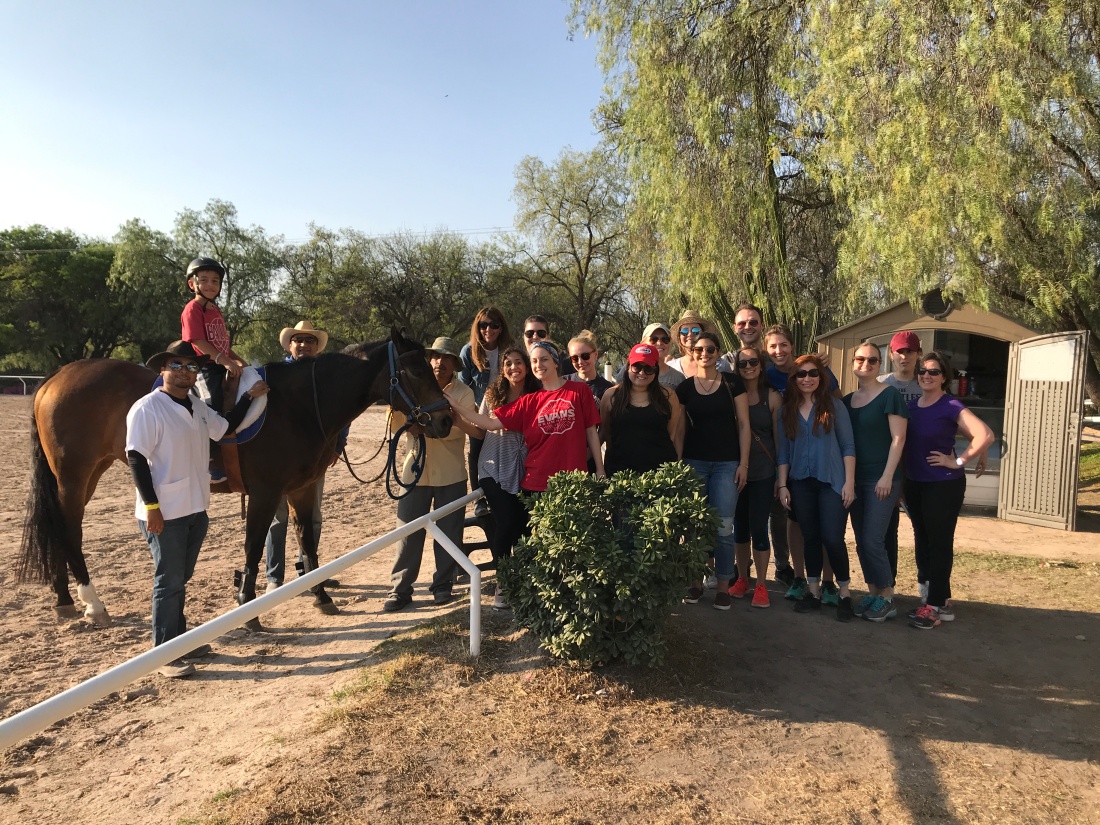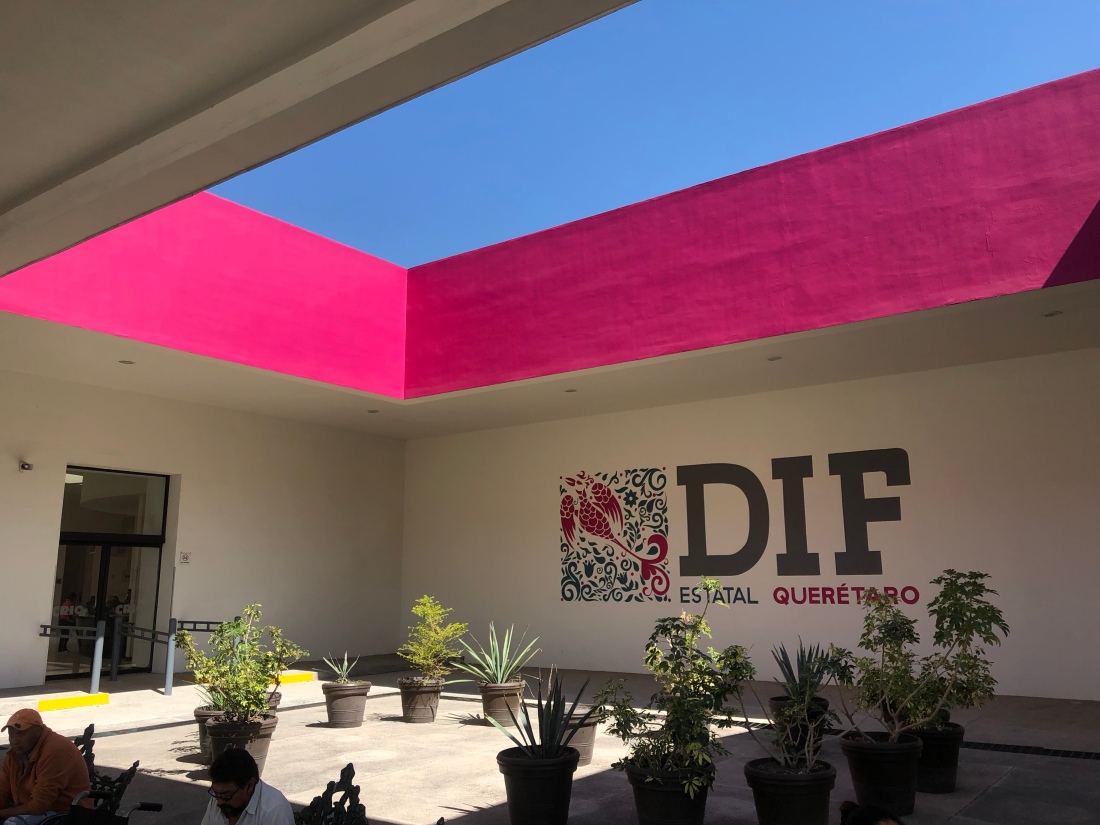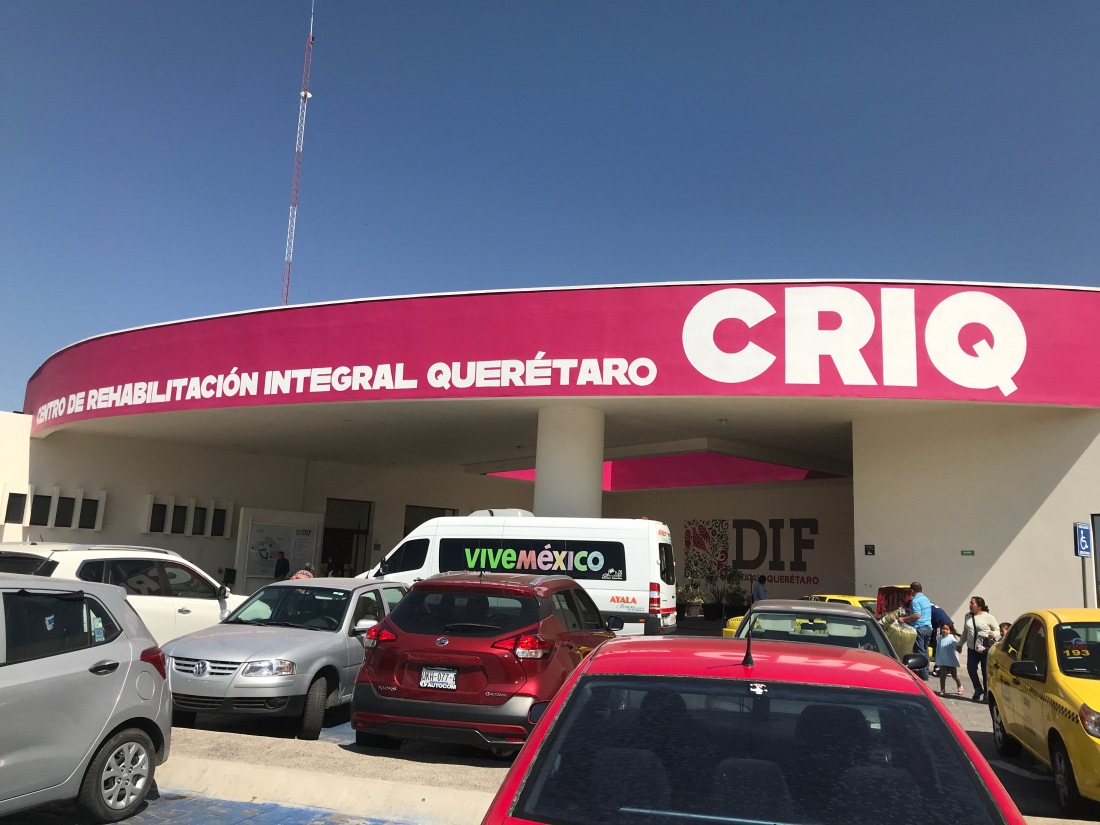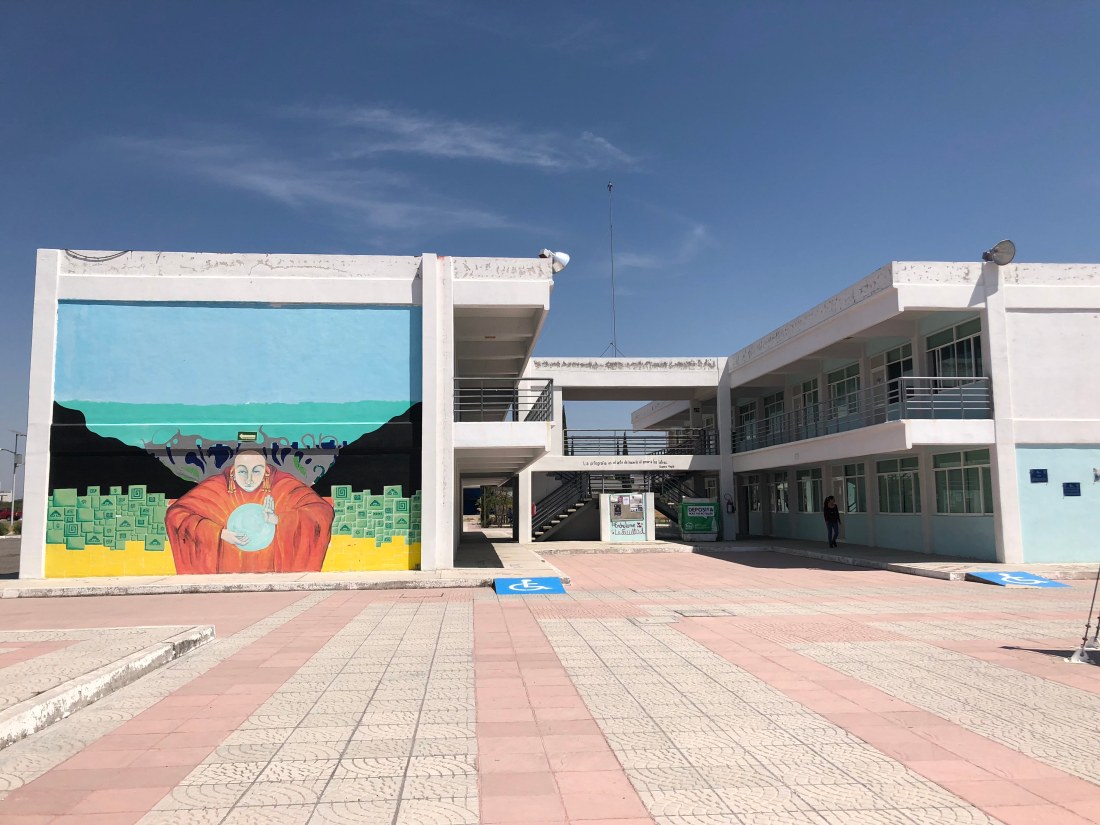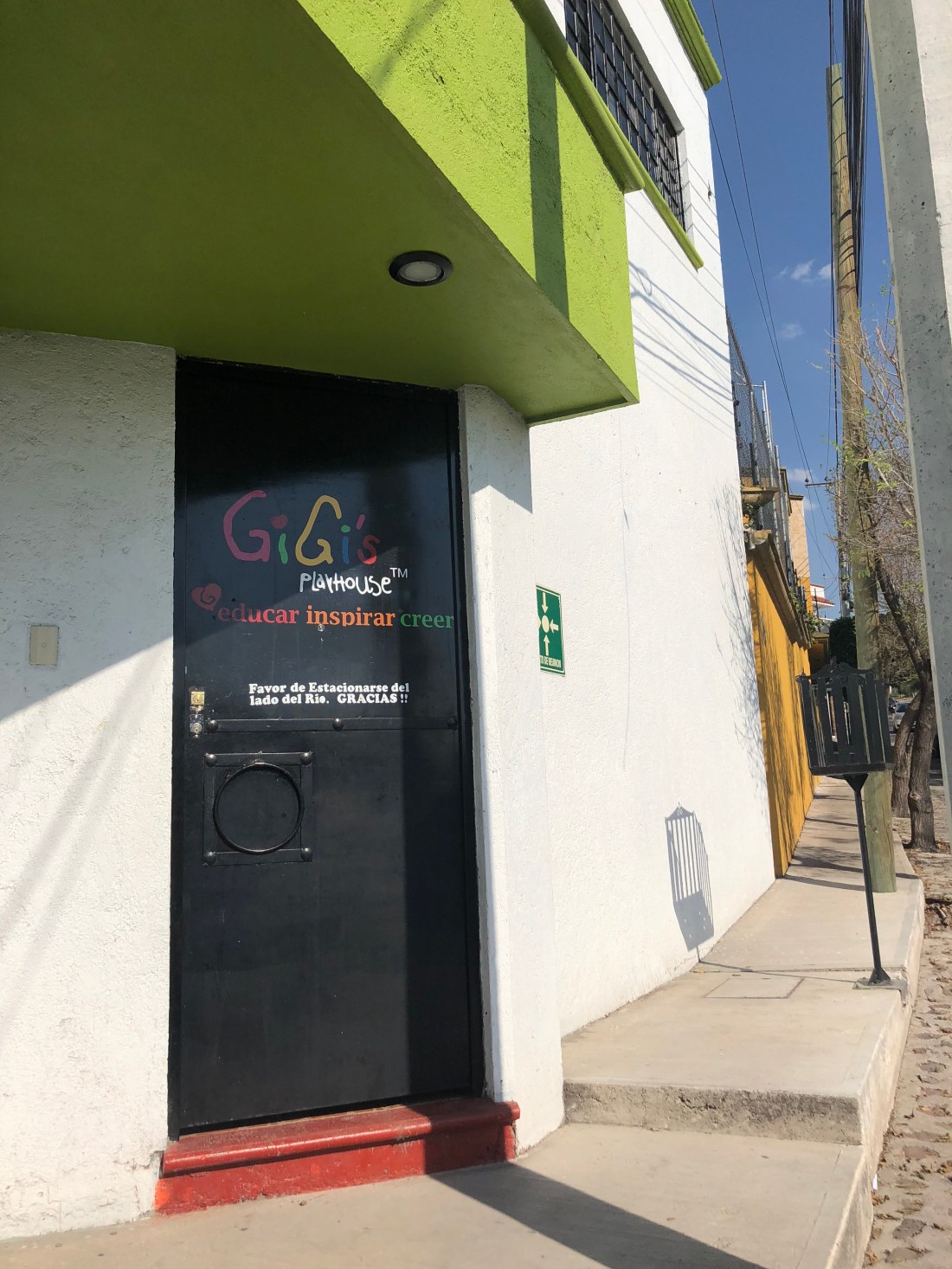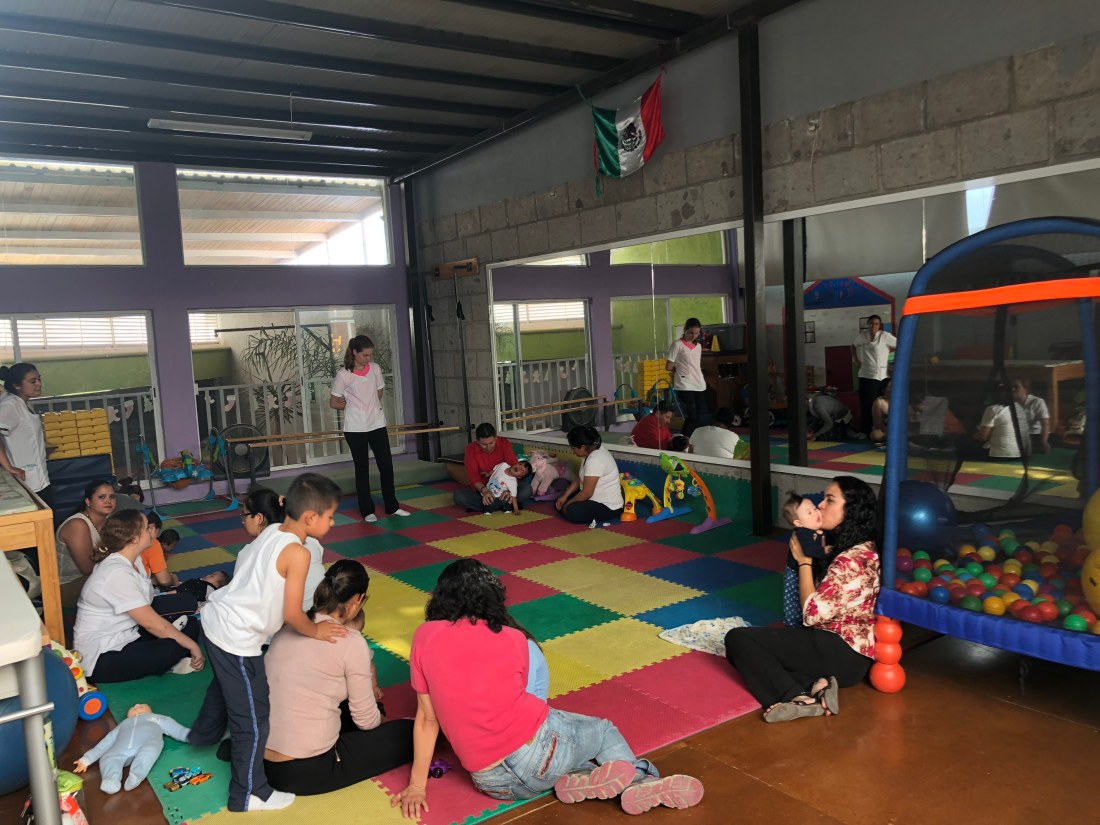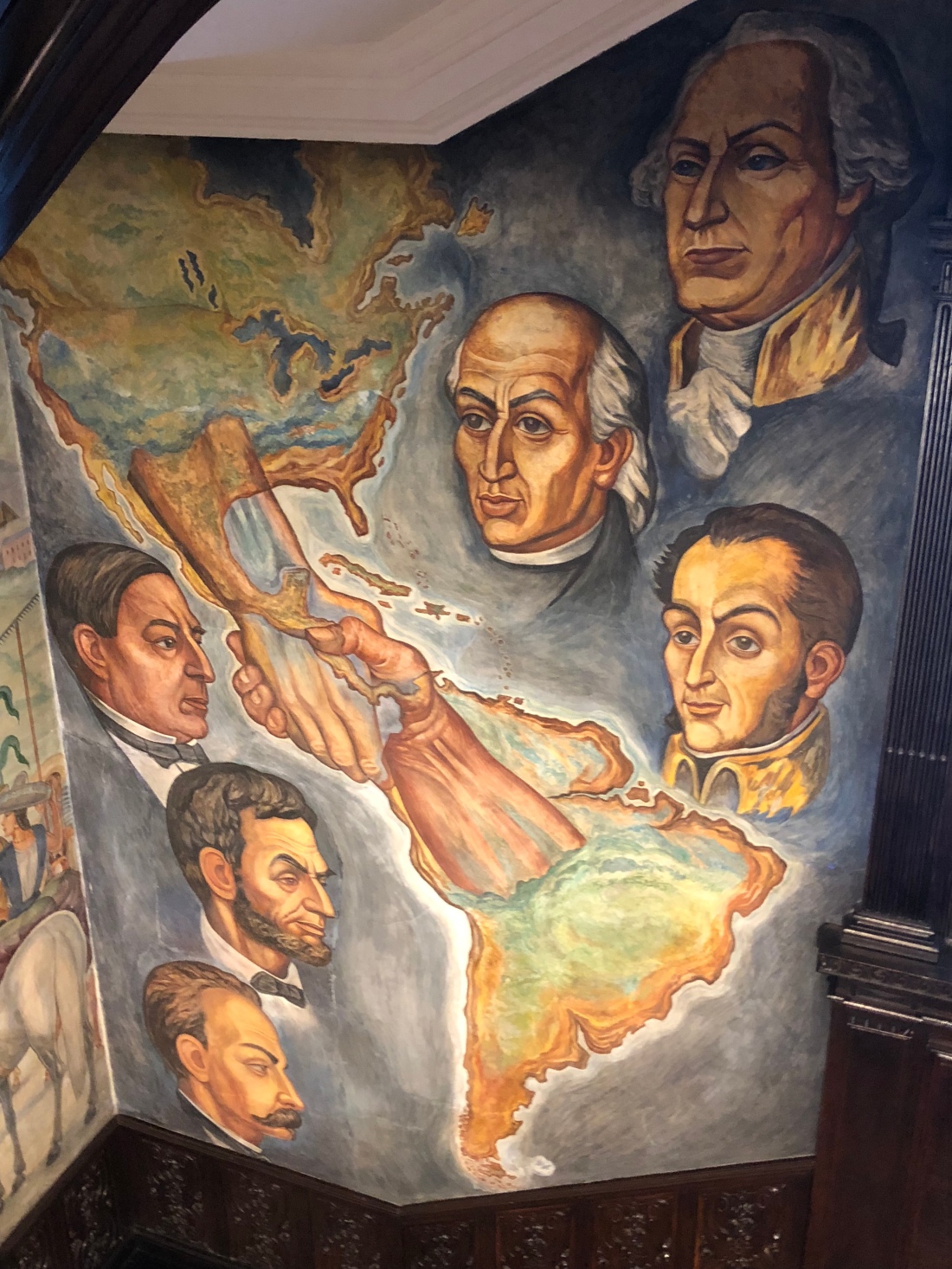Today we began with a sunrise yoga session. After a long week of educational tours, town adventures, and continued education, this morning was a perfect opportunity to renew and refresh for our final day in Mexico.
Our site visit today was to Ándale Para Oir, an auditory rehabilitation center that offered multiple services for both children and adults. The youngest client seen so far in the clinic was 5-6 months old through adult age patients. The clinic offers different types of programs with a family centered focus on prevention, intervention and education for individuals with varying degrees of hearing loss. Additionally, Andale Para Oir, has a daily preschool program which we had the privilege of observing during our site visit. The speech therapy offered is play based and includes a heavy amount of parental involvement during sessions. It has been a trend throughout our site visits for the parents to be very involved in their child’s therapy along with services being targeted to those of a low income status. This clinic is a non-profit organization which receives money from the government, grants, and creates scholarships in order to service those families who otherwise could not afford these services.
Impressively, Andale Para Oir not only conducts education at their clinic, but additionally send staff to go to schools to speak to teachers and administrators. The clinic also is able to sell hearing equipment (hearing aids and accessories, batteries, etc) at a lower cost.
Overall, we were very impressed with how motivated and passionate the clinicians were to assist their clients with their communication needs. The ability to super-serve their clients, meant so much more than any monetary compensation. Many long hours are spent helping their clients with speech and hearing. We were humbled by their enthusiasm and dedication.
Our afternoon was spent in our final Spanish immersion class. The level 1 class continued to work on medical terms and verb conjugations which we would use working with clients. The level 2 class discussed detecting SLI (speech language impairments) and otoacoustic emissions detection with infants. For the last hour, both classes were merged and participated in speech language versions of Bingo and Jeopardy. Congratulations to los Enchiladas for the win!
This evening we regroup to have a traditional Mexican meal. We have learned so much during this trip, not only academically but culturally as well. It has been an eye opening experience.
We want to thank our host, Doctora Donna Jackson-Maldonado, a Researcher and Professor of the Center for Linguistic and Literary Studies at the Universidad Autónoma de Querétaro en Mexico. We also want to thank our wonderful profesoras (professors), Dr. Core and Professor Comer for the opportunity to truly have a multicultural and interdisciplinary experience in this incredible country.
Adios Amigos de Mexico! Gracias por leyendo esta blog (Good bye out Mexican friends. Thank you for reading our blog)
Until we meet again Mexico,
Emma and Claire
















